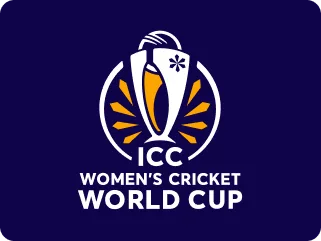
Several borderline third umpire decisions during England's fixture against Bangladesh at the Women's World Cup have put the umpire panel for the competition under the spotlight.
Heather Knight's three reprieves
Off the first ball of Marufa Akter's second over, Heather Knight was given out caught-behind by the on-field umpire. The former England captain reviewed the decision straight away, indicating that she didn't believe she had hit the ball. Ultra-Edge showed the ball passing close to both bat and pad at the same time. TV umpire Gayathri Venugopalan said "the ball is between bat and pad and there is nothing conclusive to show that it hit the bat," and reversed the on-field umpire's decision.
Rule 3.3.6 of the ICC's Decision Review and Third Umpire protocol says: "If despite the available technology, the third umpire is unable to decide with a high degree of confidence whether the original on-field decision should be changed, then he/she shall report that the replays are ‘inconclusive’, and that the on-field decision shall stand."
Knight was given another reprieve in the sixth over of the innings when she was given out lbw, again off Akter, but DRS showed the ball to be missing leg stump. A third reprieve came in the 15th over. Knight chipped a ball from Fahima Khatun to Shorna Akter at cover, with Akter diving forward to take the catch low to the ground. As Knight began to walk off the ground, the on-field umpires referred the wicket to the third umpire to check that the catch was fair.
The third umpire said the images of the catch "were a bit unclear" and that she "couldn't see the ball clearly". The decision was then reversed, with Venugopalan saying: "It's inconclusive to say the fingers are completely underneath."
The decision split opinion, with captain Nigar Sultana Joty immediately walking up to the on-field umpires to express her frustration. Speaking on BBC Radio 5 Sports Extra, Alex Hartley said: "For me the ball did touch the floor there. The fingers were underneath but the ball touched the floor. You've got to be in control of the ball, and I think she was, but the ball was touching the floor."
Knight went on to hit a half-century and anchor a nervy chase to see England over the line for their second win in the tournament. "I thought it carried and thought it was a fair catch, which is why I walked off. The third umpire decided otherwise," she admitted after the match.
ICC umpire pathway under the spotlight
The ICC unveiled an all-female umpiring panel for the 2025 World Cup, the same as in the last two Women's T20 World Cups and 2022 Commonwealth Games. The panel includes the experienced heads of Sue Redfern, Claire Polosak and Jacqueline Williams, who are all appearing in their third World Cups. However, umpires with less experience under their belts are also on the panel, including Venugopalan, who had only been a TV Umpire in two ODIs before today's game.
Other umpires on the panel also have limited experience. Candace la Borde umpired her first ODI earlier this year, while umpire N Janani filled the role of TV Umpire for the first time in an ODI during the Bangladesh v India World Cup fixture last week.
The lack of experience for the World Cup panel highlights how quickly female umpires are pushed through the pathway, and the lack of opportunities for them to gain experience throughout the system. There is no female umpire on the ICC elite panel, and while none of the male umpires on the ICC Emerging Umpires Group has ever officiated at a men's 50-over World Cup, all of female umpires bar one are on the officiating panel for the current Women's World Cup. Twelve out of the 16 umpires for the 2023 men's World Cup were drawn from the ICC's Elite Panel, with the remaining four places going to umpires in the Emerging Umpires Group "who have been identified as the most deserving of stretch opportunities".
In addition, access to DRS is inconsistent across women's bilateral international series, providing a further barrier for female umpires in particular to gain experience with the technology. England's Test match in South Africa last year did not feature DRS, and Cricket Australia first used the technology for a women's bilateral series in 2022. The ICC does not cover the cost of the technology required for the system, leaving it up to home boards to fund.
Follow Wisden for all cricket updates, including live scores, match stats, quizzes and more. Stay up to date with the latest cricket news, player updates, team standings, match highlights, video analysis and live match odds.








